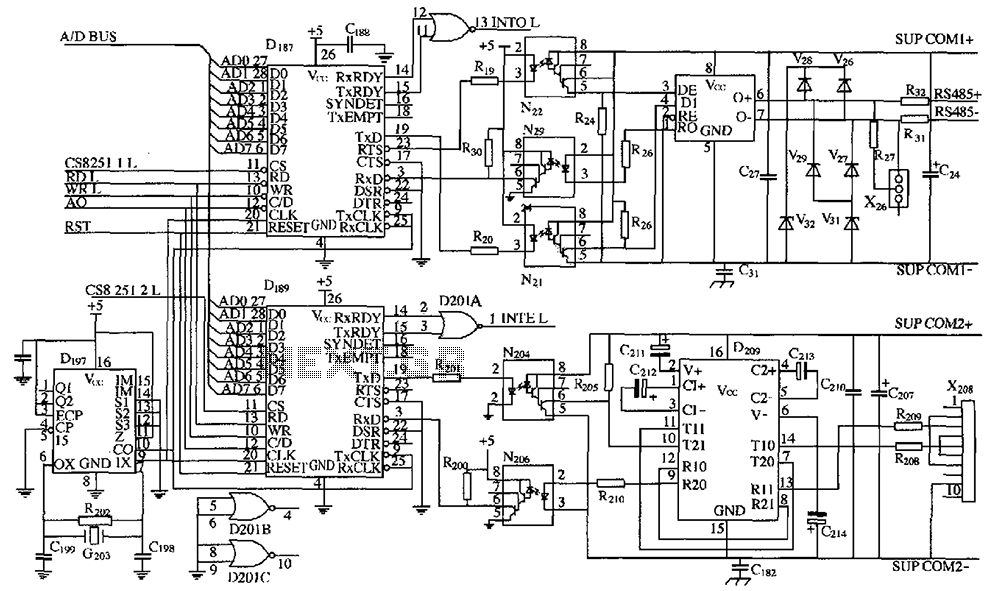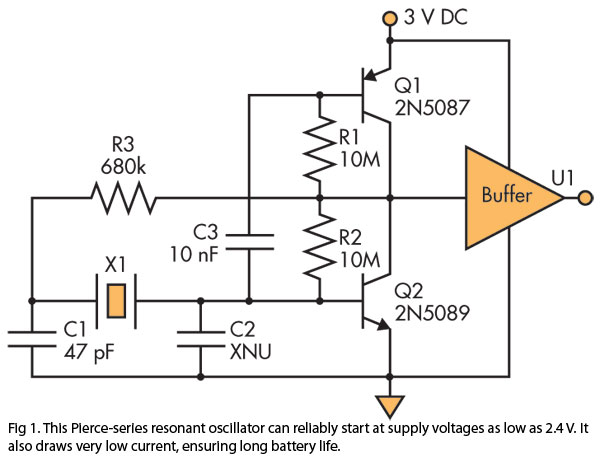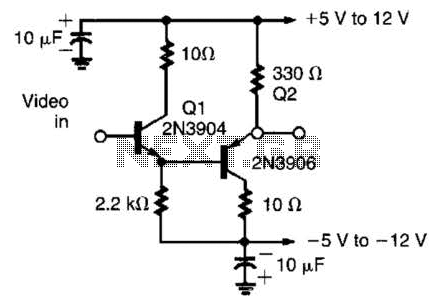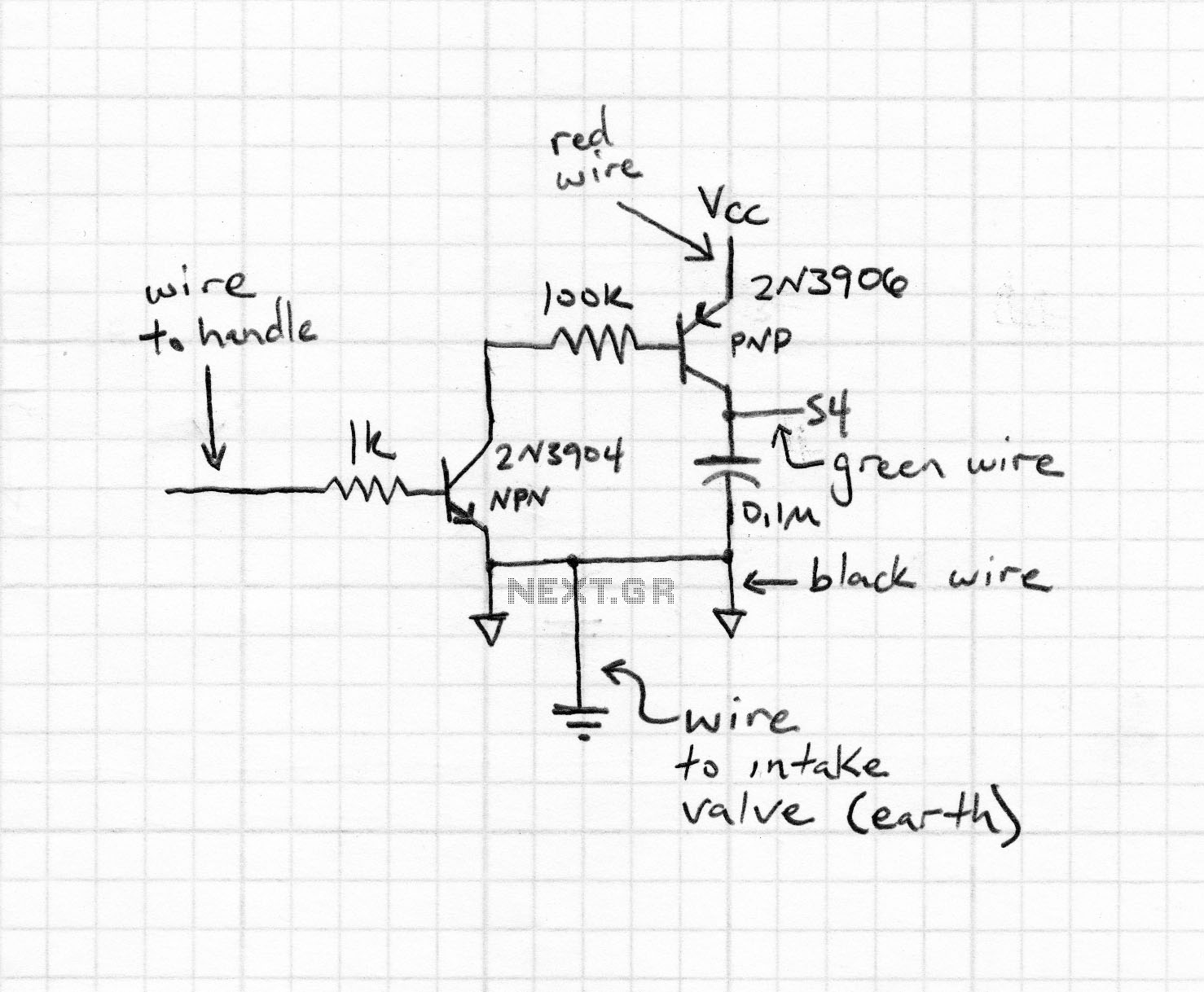
Low line loading ring detector
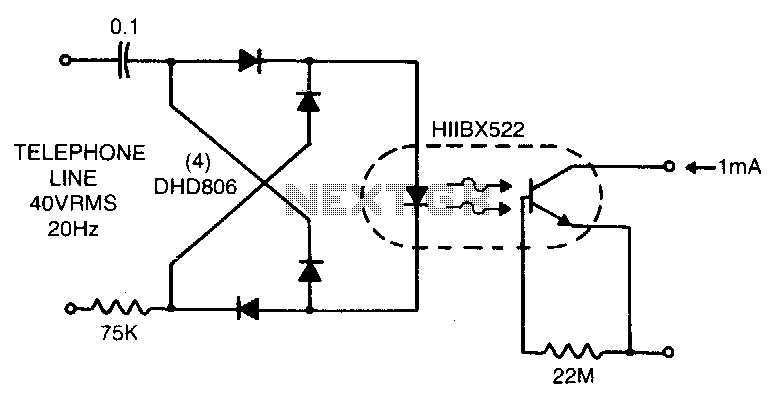
Low line current loading is provided by the H11BX522 photodarlington optocoupler, which delivers a 1 mA output from a 0.5 mA input.
The H11BX522 is a photodarlington optocoupler that is designed to provide electrical isolation between its input and output while allowing for signal transmission. It consists of a light-emitting diode (LED) and a photodarlington transistor housed within a single package. The device is particularly suited for applications requiring low line current loading, making it ideal for interfacing low-power control circuits with higher voltage systems.
The input side of the H11BX522 features an LED that emits infrared light when a forward current is applied. This LED is typically driven by a control signal, which in this case, requires a minimum input current of 0.5 mA to operate effectively. When the LED is energized, it emits light that activates the photodarlington on the output side.
The photodarlington configuration is characterized by its high current gain, allowing it to provide an output current of 1 mA with a relatively low input current. This high gain is beneficial in applications where the control signal is weak or where minimal power consumption is desired. The output transistor can switch larger currents and voltages, making it suitable for driving loads such as relays or other electronic devices.
The H11BX522 is designed to operate over a wide temperature range and has a high isolation voltage, ensuring safe operation in various environments. Its compact package makes it easy to integrate into a variety of circuit designs, contributing to its versatility in applications such as signal isolation, data communication, and control systems.
In summary, the H11BX522 photodarlington optocoupler is an efficient solution for low line current loading applications, providing reliable performance with minimal input requirements while maintaining electrical isolation between circuits.Low line current loading is provided by the H11BX522 photodarlington op-tocoupler which provides a 1 mA output from a 0.5 mA input.
The H11BX522 is a photodarlington optocoupler that is designed to provide electrical isolation between its input and output while allowing for signal transmission. It consists of a light-emitting diode (LED) and a photodarlington transistor housed within a single package. The device is particularly suited for applications requiring low line current loading, making it ideal for interfacing low-power control circuits with higher voltage systems.
The input side of the H11BX522 features an LED that emits infrared light when a forward current is applied. This LED is typically driven by a control signal, which in this case, requires a minimum input current of 0.5 mA to operate effectively. When the LED is energized, it emits light that activates the photodarlington on the output side.
The photodarlington configuration is characterized by its high current gain, allowing it to provide an output current of 1 mA with a relatively low input current. This high gain is beneficial in applications where the control signal is weak or where minimal power consumption is desired. The output transistor can switch larger currents and voltages, making it suitable for driving loads such as relays or other electronic devices.
The H11BX522 is designed to operate over a wide temperature range and has a high isolation voltage, ensuring safe operation in various environments. Its compact package makes it easy to integrate into a variety of circuit designs, contributing to its versatility in applications such as signal isolation, data communication, and control systems.
In summary, the H11BX522 photodarlington optocoupler is an efficient solution for low line current loading applications, providing reliable performance with minimal input requirements while maintaining electrical isolation between circuits.Low line current loading is provided by the H11BX522 photodarlington op-tocoupler which provides a 1 mA output from a 0.5 mA input.
